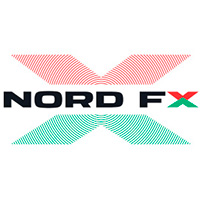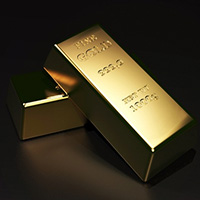Commodity trading on Contract for Difference (CFD) basis is a deal between a buyer and a seller to trade not in the actual commodity but on the difference in the price of the commodity. Trading CFDs on commodities requires investors to speculate regarding the rise and a fall of the trading instrument. The beauty of trading CFDs on commodities is that a trader is not actually buying the underlying asset, hence not taking delivery of it. A trade can take either a short or a long position. This implies that the trader hopes for the price to decrease (short position) or hopes that the price increase (long position). And either way, he can still gain.
Thus, traders in CFDs on commodities enjoy greater flexibility. This gives them more opportunities to profit from the market movement. At the same time, they stand a higher risk of losing when taking the long or short position on the price of a commodity.
Commonly Traded Commodity
The most commonly traded commodities are in sectors of metals, energies, and soft commodities. The metal sector includes the likes of gold silver, and copper while the energy sector has oils and natural gas. Commodities such as cocoa, coffee, and sugar are in the sector of soft commodities.
You need to first choose your commodity. This choice will usually be made based on the price of the unit of the commodity. The next thing will be the size of your preferred deal. This is determined by the leverage which can allow you to buy many times more commodities with your investment.
One important thing is the direction. To make a profit while trading CFDs on commodities, you must be able to predict the trade direction correctly. You will have to buy if you believe that the price of the commodity will rise and sell if you believe it will fall. At that point, it is safe to close the deal and take your profit which is the margin of rise or fall. Let us look at gold as the chosen commodity and show how to trade CFDs on it.
Trading CFDs on Gold
Trading in gold dates back to 2000 BC, the historic moment during which Egyptians began mining the commodity at the bottom of rivers as nuggets or small pieces. It later became a means of exchange as a currency being issued by a country's monetary authority. Though jettisoned at the onset of World War 1 by powerful economies, it has become a seriously sought-after commodity being traded online.
Traders are the main beneficiaries of trading CFDs on gold, not the investor. Traders make a profit when gold price changes during the contract duration. It doesn’t require the buying of the underlying assets. Due to the nature of CFDs, there can be shorting and trading on a margin. Traders in CFDs on gold must take note of the following factors that influence the price of gold to know the trading position to take:
- Demand and Supply: You must keep a tab on what is happening to jewelry production and manufacturing because the economic forces of demand and supply and price determination is a constant force here.
- Market Sentiment: During a time of political instability in a major gold supplying market, there’s bound to be global uncertainty and hence in the increase in prices of gold.
- Market Volatility: When the market is most volatile and commodities markets are unpredictable, gold can be a haven investment.
- Currency Values: The value of the US dollar exerts a powerful influence on the value of gold.
 Trump has declared that the United States could become the global capital of the crypto industry. To achieve this, he proposes reducing regulatory pressures.
Trump has declared that the United States could become the global capital of the crypto industry. To achieve this, he proposes reducing regulatory pressures. Forex trading is a captivating endeavor, promising both active and passive income streams. Yet, mastering forex is a continuous journey that transcends expertise levels, be it a novice or a seasoned trader...
Forex trading is a captivating endeavor, promising both active and passive income streams. Yet, mastering forex is a continuous journey that transcends expertise levels, be it a novice or a seasoned trader... In a resounding victory, NordFX, a prominent brokerage firm, has been crowned the "Best News & Analysis Provider" of 2023...
In a resounding victory, NordFX, a prominent brokerage firm, has been crowned the "Best News & Analysis Provider" of 2023... Errante, the premier online broker, is dedicated to delivering top-tier services and forging long-lasting, trust-based relationships with our clients. Our mission is to enhance your online trading journey...
Errante, the premier online broker, is dedicated to delivering top-tier services and forging long-lasting, trust-based relationships with our clients. Our mission is to enhance your online trading journey... Gold, a precious metal revered for its value for centuries, has found its place in the world of trading. Trading gold has become a popular way to invest in the commodity market...
Gold, a precious metal revered for its value for centuries, has found its place in the world of trading. Trading gold has become a popular way to invest in the commodity market...